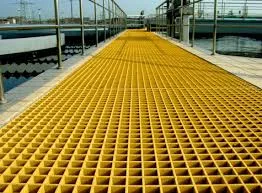
-
 Afrikaans
Afrikaans -
 Albanian
Albanian -
 Amharic
Amharic -
 Arabic
Arabic -
 Armenian
Armenian -
 Azerbaijani
Azerbaijani -
 Basque
Basque -
 Belarusian
Belarusian -
 Bengali
Bengali -
 Bosnian
Bosnian -
 Bulgarian
Bulgarian -
 Catalan
Catalan -
 Cebuano
Cebuano -
 China
China -
 China (Taiwan)
China (Taiwan) -
 Corsican
Corsican -
 Croatian
Croatian -
 Czech
Czech -
 Danish
Danish -
 Dutch
Dutch -
 English
English -
 Esperanto
Esperanto -
 Estonian
Estonian -
 Finnish
Finnish -
 French
French -
 Frisian
Frisian -
 Galician
Galician -
 Georgian
Georgian -
 German
German -
 Greek
Greek -
 Gujarati
Gujarati -
 Haitian Creole
Haitian Creole -
 hausa
hausa -
 hawaiian
hawaiian -
 Hebrew
Hebrew -
 Hindi
Hindi -
 Miao
Miao -
 Hungarian
Hungarian -
 Icelandic
Icelandic -
 igbo
igbo -
 Indonesian
Indonesian -
 irish
irish -
 Italian
Italian -
 Japanese
Japanese -
 Javanese
Javanese -
 Kannada
Kannada -
 kazakh
kazakh -
 Khmer
Khmer -
 Rwandese
Rwandese -
 Korean
Korean -
 Kurdish
Kurdish -
 Kyrgyz
Kyrgyz -
 Lao
Lao -
 Latin
Latin -
 Latvian
Latvian -
 Lithuanian
Lithuanian -
 Luxembourgish
Luxembourgish -
 Macedonian
Macedonian -
 Malgashi
Malgashi -
 Malay
Malay -
 Malayalam
Malayalam -
 Maltese
Maltese -
 Maori
Maori -
 Marathi
Marathi -
 Mongolian
Mongolian -
 Myanmar
Myanmar -
 Nepali
Nepali -
 Norwegian
Norwegian -
 Norwegian
Norwegian -
 Occitan
Occitan -
 Pashto
Pashto -
 Persian
Persian -
 Polish
Polish -
 Portuguese
Portuguese -
 Punjabi
Punjabi -
 Romanian
Romanian -
 Russian
Russian -
 Samoan
Samoan -
 Scottish Gaelic
Scottish Gaelic -
 Serbian
Serbian -
 Sesotho
Sesotho -
 Shona
Shona -
 Sindhi
Sindhi -
 Sinhala
Sinhala -
 Slovak
Slovak -
 Slovenian
Slovenian -
 Somali
Somali -
 Spanish
Spanish -
 Sundanese
Sundanese -
 Swahili
Swahili -
 Swedish
Swedish -
 Tagalog
Tagalog -
 Tajik
Tajik -
 Tamil
Tamil -
 Tatar
Tatar -
 Telugu
Telugu -
 Thai
Thai -
 Turkish
Turkish -
 Turkmen
Turkmen -
 Ukrainian
Ukrainian -
 Urdu
Urdu -
 Uighur
Uighur -
 Uzbek
Uzbek -
 Vietnamese
Vietnamese -
 Welsh
Welsh -
 Bantu
Bantu -
 Yiddish
Yiddish -
 Yoruba
Yoruba -
 Zulu
Zulu
Advanced Design of FRP Winding Machines for Enhanced Performance and Efficiency
The FRP Winding Machine Revolutionizing Composite Manufacturing
In recent years, the demand for lightweight yet durable materials has surged across various industries, including aerospace, automotive, construction, and marine. Fiber Reinforced Polymer (FRP), a composite material made up of a polymer matrix reinforced by fibers, has emerged as a frontrunner in meeting these demands. At the heart of FRP production lies the FRP winding machine, a specialized piece of equipment that plays a crucial role in shaping this innovative material.
Understanding FRP Winding Machines
FRP winding machines are designed specifically for the production of cylindrical structures such as pipes, tanks, and pressure vessels made from composite materials. These machines operate on a principle known as filament winding, where continuous fibers are wound around a mandrel in precise patterns. The fibers are typically made of glass, carbon, or aramid, each providing unique mechanical properties suited for specific applications.
The Filament Winding Process
The filament winding process begins with the preparation of the mandrel, which serves as the mold for the final product. Once the mandrel is ready, the machine applies the resin to the fibers, typically through a process called impregnation. The impregnated fibers are then wound onto the mandrel in predetermined layup angles, which are crucial for the performance characteristics of the finished composite. The angles and layers can be adjusted depending on the specific strength and stiffness requirements of the end product.
After winding, the product undergoes a curing process, where heat or pressure is applied to harden the resin, resulting in a solid composite structure. This entire process can be automated through advanced CNC (Computer Numerical Control) systems, improving efficiency, accuracy, and repeatability.
Advantages of Using FRP Winding Machines
The use of FRP winding machines offers numerous advantages. Firstly, the composite materials produced using this technology exhibit superior strength-to-weight ratios when compared to traditional materials like steel or aluminum. This is particularly beneficial in industries such as aerospace, where weight reduction translates to improved fuel efficiency and performance.
frp winding machine

Moreover, FRP materials are corrosion-resistant, which makes them ideal for applications in hostile environments, such as marine or chemical processing industries. The longevity and durability of FRP products also contribute to lower lifecycle costs, as they require less maintenance and are less susceptible to environmental degradation.
Additionally, the flexibility of filament winding allows for the production of complex shapes and custom designs tailored to specific applications. As manufacturers seek to optimize their products’ performance characteristics, the adaptability of FRP winding machines becomes an invaluable asset.
Applications of FRP Winding Machines
FRP winding machines have found applications in various sectors. In the aerospace industry, they are used to manufacture components such as wing structures and fuselage parts, where strength and weight are critical. In the automotive sector, FRP is increasingly being employed in the production of lightweight vehicle components, which help enhance fuel efficiency.
Moreover, FRP pipes and tanks produced using winding machines are becoming commonplace in the oil and gas industry, where resistance to corrosion and chemical attack is paramount. In the construction industry, FRP rebar and other reinforcement materials are gaining popularity due to their durability and reduced weight.
The Future of FRP Winding Technology
As technology continues to advance, the future of FRP winding machines looks promising. Innovations in automation, material science, and process optimization are expected to enhance the capabilities of these machines even further. The integration of smart technologies, including Internet of Things (IoT) applications and artificial intelligence, may lead to more efficient production processes and real-time monitoring capabilities.
In conclusion, FRP winding machines play a significant role in the manufacturing of composite materials that are transforming multiple industries. Their ability to produce lightweight, durable, and corrosion-resistant products makes them indispensable in today’s competitive marketplace. As the demand for such materials continues to grow, the evolution and optimization of FRP winding technology will likely foster even greater advancements in composite manufacturing.









